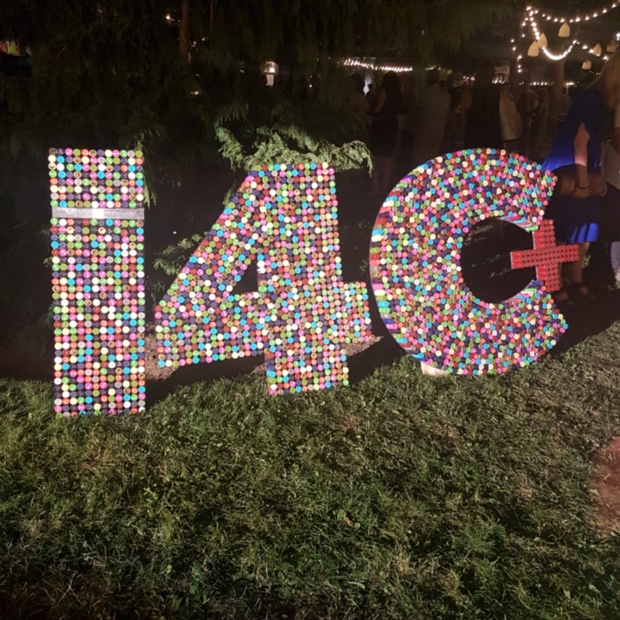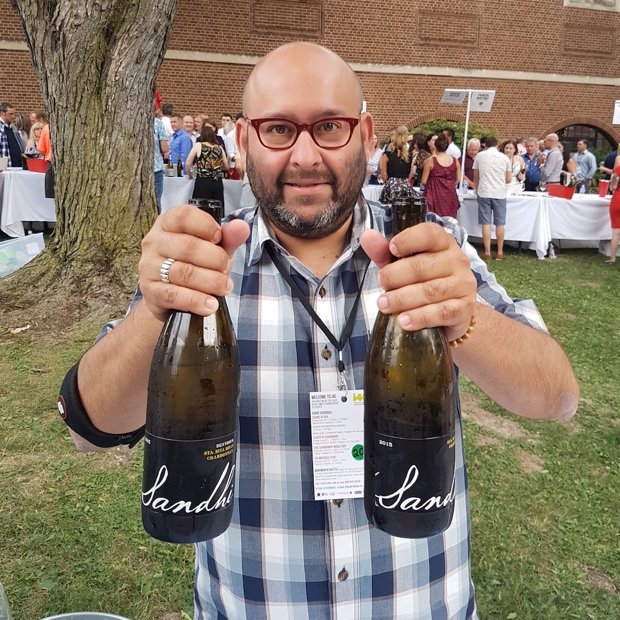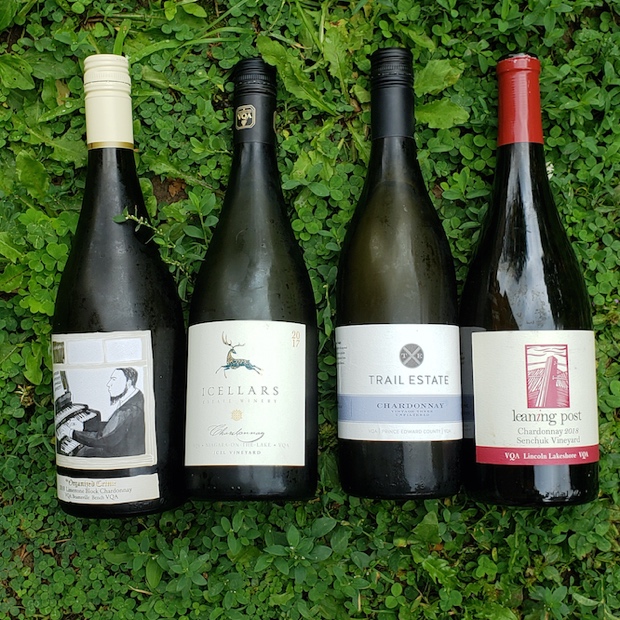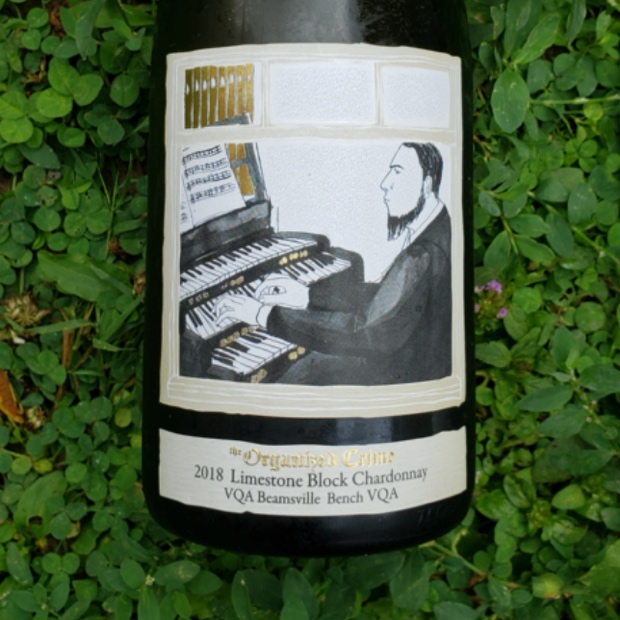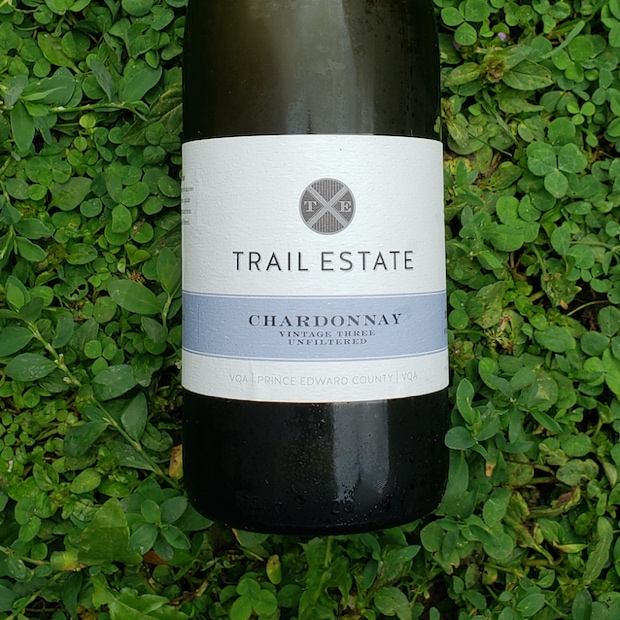Happy 10th Chardonnay anniversary i4C. Virtually or live, you’re still cool after all these years
Cool is the star attraction, 10 years running. Cool, what everyone continues to talk about, gathers to discuss, debate and celebrate. Cool is not one thing, one person or in one place but everything, in all of us, everywhere. Cool is what unites, brings meaning and really ties the varietal room together. Cool is chardonnay.
Related – Can chardonnay get any cooler?
On Saturday, July 18th at 6:00pm in “A Toast to VQA Cool Chardonnay” John Szabo and I welcomed everyone to for a virtual, interactive Zoom tasting of top Ontario wines, our virtual tailgate party. From near and far, everyone was encouraged to chat. “Get your socially distanced BBQ lit, pour yourself a glass of Cool chardonnay and let John and I have a chinwag, blow smoke, chew the fat, talk a lot without pausing,” John and I discussed the meaning of Cool and how it pertains to making wines in a climate that is anything by warm. We traded messaging, tasted eight wines between us and welcomed two special guests, Niagara’s winemaking monk Thomas Bachelder and Sicily’s Patricia Tóth of Planeta Winery. Here is the full video:
Related – I4C’ a future filled with Chardonnay
It began last Friday with events playing on Zoom screens across Ontario, throughout Canada and in fact, around the globe. There were wine tastings, educational seminars and breezy cocktail hours all virtually orchestrated to include winemakers, producers, sommeliers and wine critics, all talking about one grape variety at the core and the crux of cool-climate viticulture. The weekend long fest, affectionately known as “i4c”, has for 10 years now been bringing the wine community close together, perennially cementing the varietal bonds. Though the 2020 edition of the International Cool Climate Chardonnay Celebration gatherings was indeed virtual in 2020, they lost no lustre, significance or their chardonnay shine.
Related – The meaning of Chardonnay: You’ve gotta be cool to be kind
Chardonnay doesn’t suck and if you have doubts, a reluctant spirit to join in or just plain need to insist that you hate the stuff, consider this. Chardonnay is cool. It’s true, the good folks at i4C have shown this to me, more than once. Ontario winemakers have proved it to me. The South Africans really get it, as do the fine makers from New Zealand, Chile, Argentina and the not necessarily ready for prime time cool climate players from Australia and California too. Don’t even get me started on that Bourgogne stuff. Have we not all been contemplating the axiom of chardonnay continuing to make its own new set of rules, putting its best foot forward? Yes chardonnay is always on our minds, especially here in Ontario and so we feel the progression continuously dovetailing towards the cool and the ethereal.
In a way i4c feels like the prodigal child of the local wine industry and we wait for the homecoming every July. Change and adjustment has infiltrated all of our lives and so the concierge team and Wine Country Ontario decided to take i4C online from July 17-19. Nearly a thousand registrants got into the cool spirit by joining in three online zoom sessions, the first at 11:00am on Friday July 17, 2020 virtually for the #i4CAtHome School of Cool Homeschool Edition, presented by VQA Wines of Ontario, the Wine Marketing Association of Ontario and the Grape Growers of Ontario. The online presentation featured Andrew Jefford, Columnist at Decanter and World of Fine Wine Magazine and Academic Advisor to the Wine Scholar Guild. Andrew was joined by several of the i4C’s past keynote speakers in celebration of 10 Cool years of Chardonnay. This dynamic session involved interviews with past keynotes, all acclaimed authors and wine writers from across the globe, including Matt Kramer (2011 and 2015 keynote), Ian D’Agata (2016 keynote) and Karen MacNeil (2017 keynote). Here is that video:
Andrew Jefford begins. “Cool climate on its own is not enough. It’s what you go and do with it. The climate is just a single strand of that very complex equation that includes soil, topography and human catalysts. We don’t drink soils, we drink wine. Vineyard owners want drinkers to be greedy, to have an irreverent feeling for the vineyard. Cool-climate wine is possessive of a pattern of heat just adequate enough to produce ripe wines and to do so consistently enough. Chardonnay when grown in the right sites can shoot loveliness about, the litmus varietal, along with riesling and cabernet franc – the holy trinity. It’s not an austere holy grail, it shouldn’t mean punishing, painful, taut, tight, dry, short, bitter, lean, mean and caustic. No one in Chablis is trying to make “cool climate chardonnay,” they are trying to make the most balanced and ripe Chablis available in the vintage. The quest is always for deliciousness. Janet Dorozynski, Trade Commissioner at Global Affairs Canada writes “listening to Andrew (Jefford) is like drinking up the finest Chassagne. Arterra Wine’s Eugene Mlynczyk MW adds “new days but we’ll remember Andrew’s advice to be deliciously cool.” Jefford concludes his opening statement by saying “winegrowers have been blissfully unaware for centuries that they have been raising grapes in cool climates. They simply want to make wines that induce covetousness.”
Matt Kramer of Wine Spectator Magazine talks about The Aesthetics of Cool. “It’s a new phrase. A new world phrase. The measure is that it’s not a sure thing, to ripen and make great wine. If it does all the time then it’s not cool climate. We’re very impatient but the truth of the matter is the Burgundians set the standard for centuries and while the ultimate reign is over, everyone else is so new to it all. It’s a very modern locution, not a sure thing and how do we slowly make it become a sure thing.”
Ian d’Agata, multi-award winning wine writer and author of internationally renowned books is considered one of the leading experts in Italian wine Chardonnay and Climate Change. He asks and answers the million dollar question. “What climate change is really about is not just warmer weather but long and extreme droughts, warmer winters, flash floods and tsunamis. The melting of the polar ice caps might actually cool down Atlantic waters. Bordeaux could actually enter a cooler phase. Then a shift to biology. “Gene editing is potentially a very good thing, adding or subtracting from what is already there, it’s not like genetically modifying which introduces other organism into a host genome. The ethical issue is if people cross the line. the technology is not the issue, people are the problem.”
Karen MacNeil is a winner of the James Beard award for Wine and Spirits Professional of the Year, the Louis Roederer award for Best Consumer Wine Writing, and the International Wine and Spirits award as the Global Wine Communicator of the Year. “Everybody drinks Kim Kardashian’s Chardonnay. We think in terms of Audrey Hepburn but truth be told, it is Kardashian that moves off the shelves. People have moved their vineyards and vocabulary to cool, but not their mindset. They are still making big fat chardonnays. There’s a big disconnect, between talk and actuality, and that’s a dangerous thing. Most people are talking the cool talk, but not walking the walk. I think it’s a problem to pick early and call it a cool climate wine. There’s also a poorly conceived idea of ripeness. It’s a not a singular thing. It’s a kaleidoscope that morphs into a thing of beauty.”
The chat moves forward with everyone chiming in.
Jefford: “Saying cool climate is a style on its own is a trap. Iwould be very weary of that. Better to say I work in a cool climate and i am trying to listen to my vineyard, to be a vineyard whisperer.”
MacNeil: “When I think about ripeness I think about scrambled eggs. You have to take the pan off the heat one minute before its done. It’s the idea of being one step ahead of what you need the result to be. iI’s all about what happens before the big moment.”
Kramer: “What is identifiable as as being Ontario chardonnay? A lean but not mean and a distinct minerality and I believe it does come from the soil. I love Prince Edward County chardonnay, no other wine, certainly not from California or Oregon tastes like Ontario chardonnay. In a blind tasting Ontario would always stand out as being chardonnay, for whatever reason that may be.”
MacNeil: “I love maximum flavour with minimum weight. distinct obliqueness, vibrational, like watching ballet, you lift in the air with energy and without so much gravity. tension and flavour.”
d’Agata: “I really do believe Canada makes world class chardonnays, certainly better than chardonnay made in Italy. They speak of Somewhereness, to borrow Matt Kramer’s phrase, weightless, laser-like acidities and are able to communicate the sense of the land. Refreshing, mineral-driven site specific wine. Ontario can be very proud of it.”
Jefford: “Stealthy wines, wines you need to spend time with, cozy up to, sit beside and get to know. Have a meal with. Have a meal with your partner, have a second and third glass, drain the bottle and that you can do with Ontario chardonnay.”
Click here to see the list of participating Ontario wineries
Click here to see the list of participating International wineries
The afternoon session was one of academics meeting market experience in a lively debate! Featuring a dynamic panel of multi-hat wearing Canadian industry professionals: John Szabo MS (Ontario), Treve Ring (BC), Brad Royale (Alberta) and Véronique Rivest (Québec) held a virtual debate about the various scientific and interpretive parameters of what it means to be cool. Featuring, and leveraging, the sensational Chardonnays of Chablis, New Zealand and Ontario, each panelist was asked to defend, or condemn, one of the classic parameters of cool climates. Including, but not limited to, latitude, altitude, length of growing season, average temperatures, soil colour and temperature, and sunlight hours. Which is most important, and how should cool climate really be defined? Here is the video:
What are the characteristics of cool chardonnay?
Cool in this sense is trying to find the sweet spot as if at midnight where sugar ripeness, acid structure, phenolic ripeness and fruit character meet for optimum wine results. The latter is what John Szabo considers the critical aspect of making great cool-climate wine. Treve Ring talks about growing degree days and the original benchmark measuring stick, The Winkler Scale. Mean temperature of the month, minus 10, times the number of days in the month – multiplied by seven for the number of the season. On the positive side is for comparisons, i.e. Prince Edward County versus Chablis, 1250 vs. 1350 GGDs in 2019. Still a basic application but hardly complex enough to tell a full story. Ultimately the relationship between vine growth and temperature is not linear. This is the argument against GGDs being the be all, end all way to define growing ability in a climate. Grape varieties are all different and also different clones of a varietal will react different to sunlight hours. A good tool, a useful tool, but does not take climate into account. So, in the end “a limiting factor,” says Szabo. “It worked well in the 1940s and 50s “says Brad Royale, “in the time of emerging viticultural areas and where growers needed a simple, base reality.”
Royale goes on to talk about soil temperature and colour, heat retention and magnification, from white limestone, red, blue, black or grey clays, all effect grape growing in different ways. It is a chat note from Eugene Mlynczyk MW that stands out as important. “Science shows that things matter (or not) … with the added complexity of subjective factors in the case of wines (or any other “artform”) …” Karl Kliparchuk is a professor of Geology at British Columbia’s Institute of Technology. He adds “interior vs coastal vs near large interior water bodies also affects cool climate.” True that.
The next question “are latitude and altitude the single most important determining factors for cool climate wines?” is answered by Soif Wine Bar in Gatineau’s Sommelier-owner Véronique Rivest, one of the most respected sommeliers in Canada and abroad. “No latitude is not the only factor, continentality (also with thanks to Chablis’ Athénaïs de Béru) is a much bigger factor, especially with respect to danger of frosts.” Latitude, latitude, latitude “will determine heartretention, solar radiation and seasonality. Latitude defines the original consideration of where to plant.”
Brad Royale adds that “a cool climate region is surely one that is susceptible to spring frosts, especially in the midst of warm temperatures.” Diurnal temperature shifts are key. “Most cool climate viticultural areas have relatively boring (10 degrees) diurnal temperature fluctuations. Hot climates, especially deserts have the widest range.” The group goes on to wonder if is sunshine the new rain and can we use length of growing season to define cool chardonnay? Both are answered with more yes than no responses so the times they are ‘a changin’.
Can Chardonnay get any cooler?
Is there a comparable white grape that speaks of its origins in more varied tones? We have unoaked, barrel fermented, 50-50, unfiltered, reductive, must oxygenated and many more methods and styles of Ontario chardonnay. Which one is done best? Sometimes we mimic Mâconnais, other times Chablis and often a Bourgogne Villages approach. What’s the best way to go about it? Is chardonnay a victim of its own ubiquity and adaptability.” What makes it so special then? “Chardonnay expresses place, as well as production, terroir as well as technique.” Chardonnay should taste like it has come from a place, but also from a time. It’s a hell of a lot easier to plant in the right spot.
As I mentioned, John and I tasted four wines each during our seminar. Here are my notes on the four that I opened.
Organized Crime Chardonnay Limestone Block 2018, VQA Beamsville Bench, Ontario (11951, $24)
From Jan Tarasewicz, his daughter Ania de Deluba and winemaker Greg Yemen, on Mountainview Road in the shadow of the Escarpments’s steep cliff faces. Whole bunch pressed, juice settled for 12 hours and put very turbid to puncheon (none new), no bâtonnage and full malolactic conversion. Classic Beamsville chardonnay of cool, snappy and piqued tendencies with the added warmth of a vintage bringing some lemon curd and just turning to golden ecru caramel glaze for rich measure. Lots of ripeness, definite somewhereness and what’s desired, as in deliciousness. Drink 2020-2023. Tasted July 2020
I-Cellars Chardonnay Icel Vineyard 2017, VQA Niagara-on-the-Lake ($40)
From Niagara-on-the-Lake and 2010 founder Adnan Icel, a rich throttled chardonnay barrel fermented in 500L French oak puncheons, lees stirred for six months, then aged 12 months more. Tells us to expect rich, opulent, creamy and highly flavourful chardonnay. That it is. Flint-struck if only momentarily, correctly reductive in the sense of fresh encouragement combined with the Niagrified creamed corn, again, if only during this persistently youthful state. Maybe causes a note of bewilderment for some but stay with this wine, give it a year’s time and all will be worth it. Will drink in optimum and designed fashion eight months from now and for two-plus years thereafter. Drink 2021-2024. Tasted July 2020
Trail Estate Chardonnay Vintage Three Unfiltered 2018, VQA Prince Edward County, Ontario ($40.00)
A bit more than a hectare of chardonnay and 312 cases in 2018, harvested September 19th to 24th (3-4 weeks ahead of 2017, which was October 8th). Set to natural ferment and put to 85 per cent 500 L French oak puncheons and 15 per cent 225 litre barriques, 33 per cent second fill, (17) third fill and (50) neutral, for 10 months. Lots of lees contact though I doubt Mackenzie Brisbois did much or even any stirring. Bottled unfined and unfiltered. When I reviewed number two I noted more flesh and complexity than the first vintage and said in many ways it was Mackenzie Brisbois’ first truly personal chardonnay. So 2018 is the next one and oh, baby. More flesh, more caramel, more body. If at first there seems to be a turbid or demure sense of aromatics, they come out like wildflowers with just a moment’s agitation. Sorry to say but the vintage is just a bit too easy, not hard to get, open to a relationship without needing too much coercing. But deliciousness and agreeability are positives and so we’ll just have to chalk it up to epistemic Trail Estate chardonnay success. Drink 2020-2025. Tasted July 2020
Leaning Post Chardonnay Senchuk Vineyard 2018, VQA Lincoln Lakeshore, Ontario ($45)
Set apart from the Bench wineries and while still beneath the Niagara Escarpment Senchuk Vineyard sits on more of a plain that gently slides down the Lincoln Lakeshore and into Lake Ontario. Perhaps it will become Ontario’s next sub-appellation. Sandy soil is maculated by largish stones three to four feet down. This atop a bed of grey clay so the low vigour of the sandy soil will be offer up a flip-side, a foil to the heavy clay of nearby locales like the Beamsville Bench. This third chardonnay from the home vineyard comes off of vines planted in 2011 so now this seven-year old fruit is starting to really mean something. And Ilya Senchuk is a winemaker who studies, concentrates and plans his work around clones. It’s not just about where to plant which varietals but which clone will work best and where within the greater where. Vineyard, vintage and variance. Senchuk truly believes that greatness is determined by varietal variegation, from vineyard to vineyard and from year to year. From 2018: 64 per cent Clone 548 and (36) Clone 96. Listen further. Warm season so picked on September 18. The grapes were gently whole cluster pressed (separated by Clone), allowed to settle in chilled tanks over night. The juice was then racked into barrels; Clone 548 – one puncheon and three barriques, Clone 96 – three barriques, where they underwent spontaneous alcoholic and malolactic fermentation. The lees were not stirred and it was allowed to age for 16 months. Power, body, tons of fruit, definite barrel influence, a southern Bourgogne kind of vintage, so maybe Pouilly-Fuisée or Maconnais Village with a specific Climat. For the time being we call the Village Lincoln Lakeshore and Senchuk Vineyard the geographical designation. The lemon curd and the acidity are there in a great tangle so yes, this is très cool chardonnay. I think we can safely say already that the Pinot Noir and the Chardonnay grown in Ilya and Nadia’s home vineyard is on its own, one of a kind and makes wines that don’t taste like anywhere else. This 2018 cements the notion and opens the next stage of the discussion. Drink 2021-2027. Tasted July 2020
Good to go!
godello
Twitter: @mgodello
Instagram: mgodello

